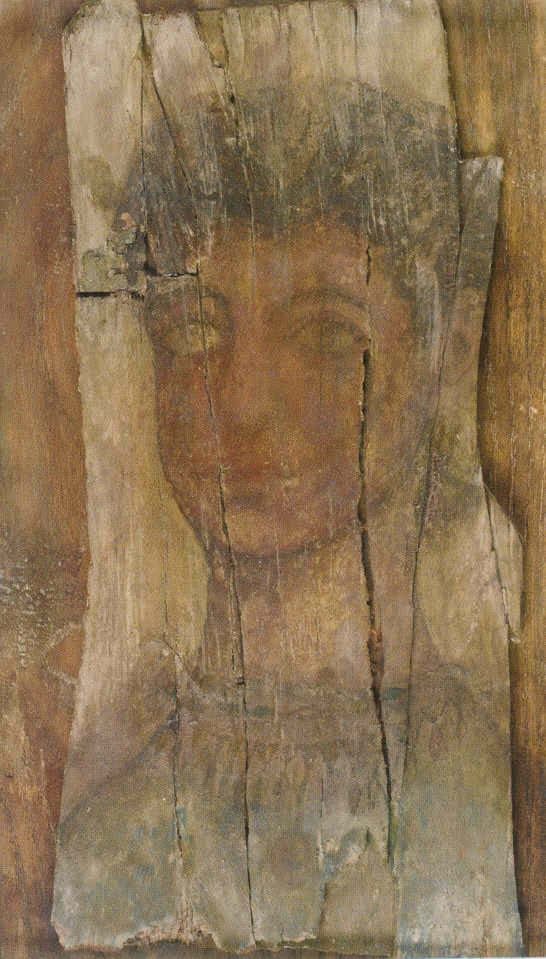Roman Period Mummy Portrait Depicting a Young Woman, 2nd Century CE
6 x 12.25
X.0124
Although commonly referred to as “Faiyum portraits,” mummy portraits from Roman Egypt have been found throughout the country, from the Mediterranean coast to the banks of the Nile Valley; however,...
Although commonly referred to as “Faiyum portraits,” mummy portraits from Roman Egypt have been found throughout the country, from the Mediterranean coast to the banks of the Nile Valley; however, many of the most celebrated works come from cemeteries in the desert oasis of Faiyum. These fascinating paintings are the product of two worlds, combining Egyptian funerary beliefs with the sophisticated portraiture of the Greco-Roman tradition. The preservation of the physical remains of the deceased was a central focus of Egyptian funerary customs, eventually leading to the creation of mummies. However, mere preservation of the corpse was not sufficient, the mummy itself had to appear alive. Elaborate coffins and funerary masks evolved to present the remains with the appearance of vitality. Although mummification was still practiced during the Roman Period, the techniques had begun to devolve and many of these mummies have since decayed, leaving behind only these haunting portraits. While the painting technique of Faiyum portraits is unmistakably Roman, their presence on or near the remains of the deceased is an Egyptian custom, representing a fusion of technique and belief. The people portrayed were likely the administrative elite and their families who ruled over this multiethnic, multicultural frontier of the Roman Empire. No doubt they held faith in the Ancient Egyptian cults, as evident by their focus on preparing for the afterlife; but they also chose to depict themselves as Romans, wearing customary Roman fashions and jewelry. The heightened realism of the portraits was made possible by the relative fluidity of the encaustic technique where pigments were mixed with hot or cold beeswax as well as other ingredients, producing a medium that is very similar to oil paint. This striking portrait of a young woman was painted in the encaustic technique on limewood. She is represented in three-quarters view with her hair styled high on top of her head. She wears two beaded necklaces that partially hang over her light blue tunic. Who was this young woman? While we can only guess her identity and place in life, portraits such as this one offer one of the few opportunities we have to stare face to face with a citizen of Ancient Egypt.



